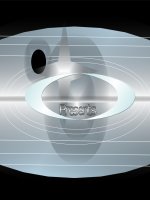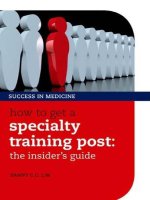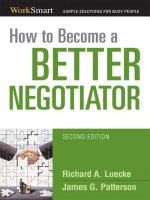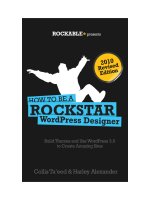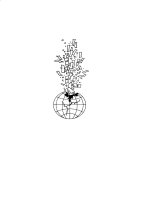LLF how+to+become+a+study+machine+no+matter+how+busy+you+are
Bạn đang xem bản rút gọn của tài liệu. Xem và tải ngay bản đầy đủ của tài liệu tại đây (3.66 MB, 23 trang )
HOW TO BECOME A STUDY MACHINE
…NO MATTER HOW BUSY YOU ARE
LANGUAGE LEARNING FOUNDATIONS
In this module you will learn:
What effective study looks like
…and where most people go wrong
How to study more
What is most important to do
1. Where do most people go
wrong?
They believe that hard study is best
But what I’ve learnt from all my
languages is…
You don’t learn a language
You get used to it.
You don’t learn a language
You get used to it.
2. What does effective study
look like?
Balancing your tendency to study hard
with the frequency you need to get
used to the language
It’s difficult to study hard and
frequently!
And yet that’s what most people
think they need to do.
I disagree.
You’re much more likely to succeed if
you do little and often.
Don’t learn it, get used to it.
1
Frequency is more important than length
2
Little and often
3
You don’t need to study more that 1 hour a day
4
Anything else can be downtime
3. How to study more
How much can you do in a day?
Maximise your study frequency, not
study time, by:
Having a variety of materials
Making them portable
Filling up all your dead time
7:30am: Wake Up. Spend 5 minutes reviewing flashcards
on my flashcard app.
7:40am: Shower. Write out the hiragana alphabet in my mind, one
by one.
7:50am: Get dressed. Play an episode of a Japanese podcast as I
get ready.
8:10am: Breakfast in local café. Play a YouTube video from my
Japanese playlist on my iPad.
8:30am: Train. Listen again to yesterday’s podcast, or read a book
chapter.
3:00 pm: Coffee break. A quick flashcard session.
5:25 pm: Waiting for the train. Another flashcard session.
5:30 pm: Train. Listen again to the podcast episode from this
morning.
6:30 pm: Gym. Listen to an interview from SBS Japanese. No
gym? 1-hour session with my tutor on iTalki.
7:00 pm: Dinner. Catch up on the news in simplified Japanese
with NHK News Web Easy.
7:30 pm: Time to chill. But I keep it in Japanese with an
episode of the latest drama.
9:30 pm: Another quick flashcard session before bed.
9:45 pm: Bed. I re-read the pages of 日本人の心がわかる日本語
that I read at lunch.
Important:
A combination of study and revision
Only possible if you have materials ready
Frequency rather than intensity
This is what’s possible.
How quickly would you improve if your day
looked like this?
THE LESSON
It’s more important to do little and often than to try
to study too hard. Design your day around this.
To see how I applied these principles in learning Cantonese, see: http://
iwtyal.com/how-to-learn-cantonese-1-year/
… AND
YOU’RE
DONE!
Next up:
Module 9 – Exactly what
activities to do everyday.
Thanks for watching the
eighth video. In the next video
we’re going to look at how to
decide what to do everyday.
In the meantime…
Hop over and join the discussion on my
Facebook page:
facebook.com/iwillteachyoualanguage
